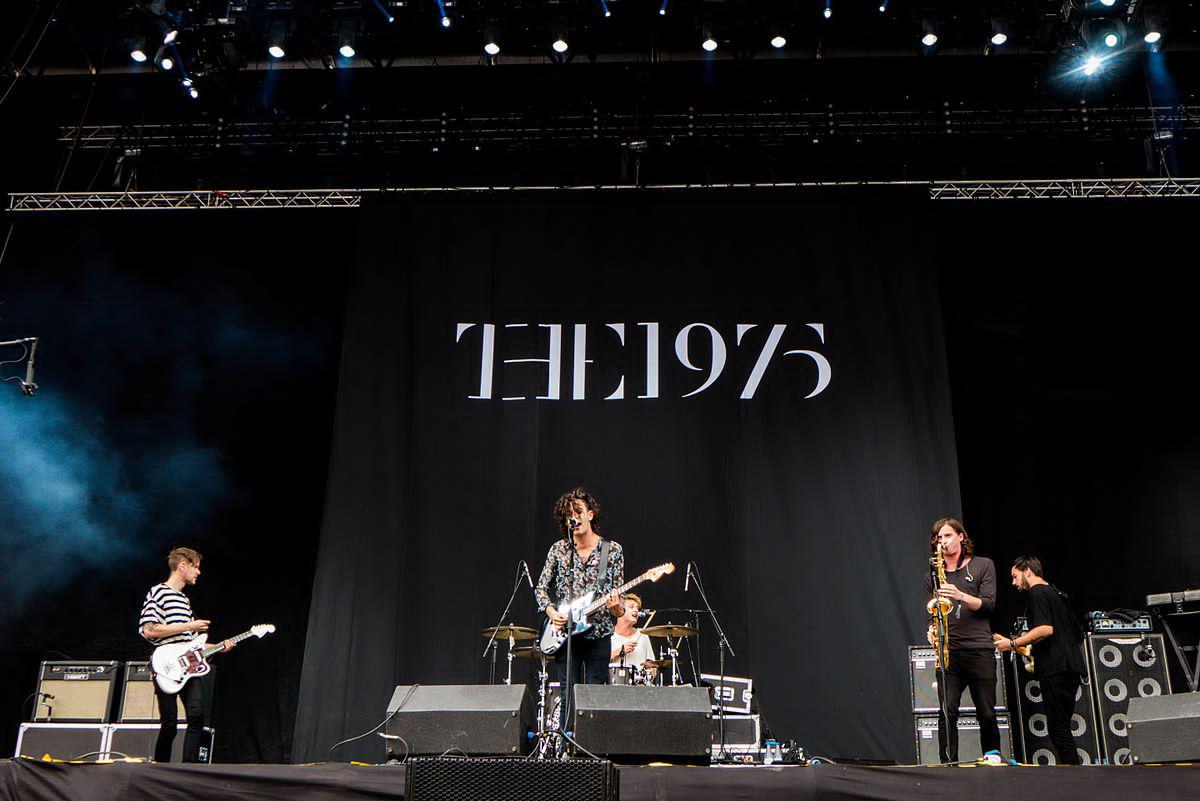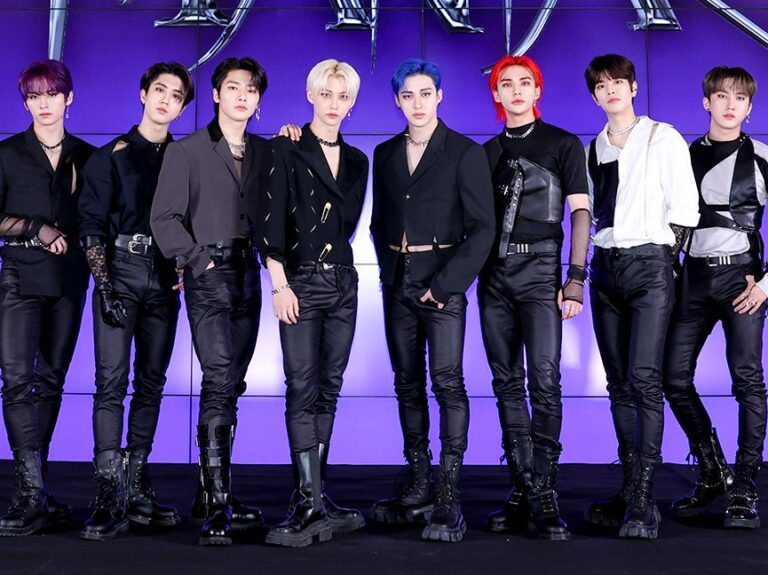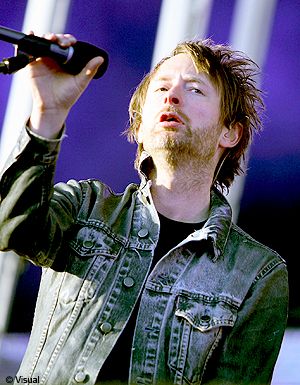
The 1975 is a name that resonates with music lovers across the globe. Since their formation in 2002, this British band has taken the music industry by storm, carving out a niche that blends genres like pop, rock, electronic, R&B, and even jazz, creating a sound that is unmistakably their own. From their early days in Manchester to becoming one of the most exciting acts of the 21st century, The 1975’s story is one of artistic evolution, cultural commentary, and a deep connection with their fanbase. This post explores the history of The 1975, their journey to stardom, their albums, and their enduring influence on modern music.
Origins of The 1975
The story of The 1975 began in Wilmslow, Cheshire, England, where the founding members—Matthew Healy (vocals, guitar), Adam Hann (guitar), Ross MacDonald (bass), and George Daniel (drums)—first met during their teenage years. Healy, the charismatic lead singer, and Hann were both students at Wilmslow High School, and their shared love of music led to the formation of a band initially known as “Me and You versus Them.” Over time, they changed their name to The 1975, a moniker inspired by a scribbled note in the back of a book that Healy found: “The 1975.”
Their early years were spent playing small gigs in and around Manchester, honing their sound and developing their unique blend of genres. It was a period of experimentation and musical exploration, with influences ranging from indie rock to electronic music and even elements of jazz and funk. The band’s sound gradually began to take shape, and they started to gain traction in the local music scene.
The Breakthrough: The 1975 (2013)
The band’s big break came in 2013 with the release of their self-titled debut album, The 1975. The album was met with both critical and commercial success, quickly establishing the band as one of the most innovative and exciting new acts in the UK. The album’s blend of catchy pop hooks, atmospheric synths, and introspective lyrics set it apart from the mainstream music of the time.
One of the standout features of The 1975 was its versatility. The band was able to seamlessly weave between different genres and styles, sometimes blending indie pop with smooth R&B grooves, and other times experimenting with electronic textures. Tracks like “Love It If We Made It” and “It’s Not Living (If It’s Not With You)” showcased their ability to write deeply personal and emotionally resonant lyrics, while songs like “The City” highlighted their knack for creating infectious, radio-friendly hooks.
Lyrically, The 1975 explored themes of love, existentialism, and the disillusionment of youth. Songs like “Love Me” offered a critique of modern culture and the pursuit of superficial ideals, while tracks like “Robbers” delved into the complications of love and youth rebellion. It was an album that resonated deeply with a generation grappling with identity, relationships, and the rapidly changing cultural landscape.
The success of The 1975 led to widespread recognition. The band began playing larger venues and festivals, including Coachella, and they quickly built a dedicated fanbase. Their style—both musically and visually—became instantly recognizable, with their distinct use of neon lights, minimalist album artwork, and Healy’s trademark self-assured persona.
I Like It When You Sleep, for You Are So Beautiful Yet So Unaware of It (2016)
In 2016, The 1975 released their sophomore album, I Like It When You Sleep, for You Are So Beautiful Yet So Unaware of It. The album was a bold step forward in the band’s evolution, further cementing their status as one of the most innovative and genre-defying bands of the era. The title, which is both playful and melancholic, encapsulates much of the album’s themes: the tension between innocence and experience, beauty and disillusionment, love and longing.
At nearly 80 minutes long, I Like It When You Sleep was an ambitious and sprawling album that explored an even wider range of sounds and influences than its predecessor. While The 1975 was rooted in indie rock and electronic pop, I Like It When You Sleep incorporated elements of jazz, ambient music, and even 80s synth-pop, creating a rich, immersive listening experience.
The album’s singles, including “Love Me,” “The Sound,” and “If I Believe You,” were immediate hits. “Love Me” was a perfect example of the band’s ability to blend social commentary with infectious pop melodies, as it critiqued vanity, celebrity culture, and the commodification of identity. “The Sound” was another anthemic track, with its catchy chorus and energetic beat, while “If I Believe You” showcased the band’s experimentation with gospel and soul influences.
The album was a critical success and helped to solidify The 1975’s place in the mainstream music world. The band’s lyrics continued to explore complex themes, such as the disillusionment of youth, identity, and relationships. It was clear that The 1975 were no longer just an indie band—they had become cultural commentators, using their platform to express thoughts on everything from politics to personal introspection.
A Brief Interlude: The Shift in Sound and Identity
By the time The 1975 began work on their next album, A Brief Inquiry Into Online Relationships (2018), the band had experienced a significant shift in both their sound and their lyrical content. The cultural landscape had changed, and so had the band’s approach to music. The digital age, social media, and the increasing influence of technology on personal relationships became central themes of their new album.
The lead single, “Love It If We Made It,” tackled social issues head-on, addressing themes such as the state of the world, political corruption, and the challenges of modern life. The song was a bold statement about the power of music as a vehicle for social commentary, and it was a track that resonated deeply with fans who were experiencing the same disillusionment in the world around them.
A Brief Inquiry Into Online Relationships was another genre-blending album that explored the intersection of modern life, technology, and human relationships. Songs like “It’s Not Living (If It’s Not With You)” showcased the band’s ability to write infectious pop songs with deeply personal lyrics, while tracks like “Sincerity Is Scary” explored themes of emotional vulnerability and the complexity of modern communication.
Critics hailed the album as a triumph, with many praising its intellectual depth and musical innovation. It marked a more mature phase for the band, as they embraced their role as cultural commentators in the digital age, using their music to navigate the complexities of modern existence.
Notes on Music and Influences
The 1975’s music draws heavily from a diverse range of influences, reflecting their genre-blending approach. Early comparisons to bands like The Cure, Radiohead, and David Bowie were frequent, with critics praising their willingness to take risks and defy genre conventions. As their career has progressed, the band has incorporated more elements of electronic music, jazz, ambient music, and even 90s R&B, constantly evolving and challenging expectations.
Lyrically, Healy’s introspective and often confessional style has become one of the band’s most distinctive features. His ability to blend personal narrative with societal critique has made him a unique voice in the modern music scene. Whether exploring the complexities of love, self-doubt, or the influence of social media on identity, Healy’s lyrics have a way of speaking directly to listeners, making the band’s music feel deeply personal and universal at the same time.
Notes on a Conditional Form (2020) and Beyond
In 2020, The 1975 released their fourth album, Notes on a Conditional Form. The album continued to expand on the themes of modern life, technology, and the challenges of navigating identity in an increasingly complex world. However, it also marked a departure in sound, with the band experimenting with elements of post-punk, industrial music, and even ambient pop.
One of the most notable aspects of Notes on a Conditional Form was its sheer scope and ambition. At over 80 minutes long, the album featured a wide range of sonic experiments, from the ambient soundscapes of



